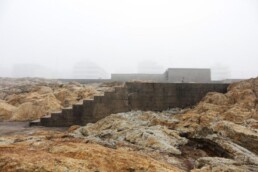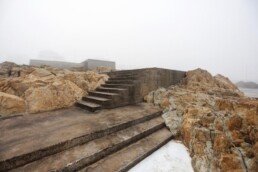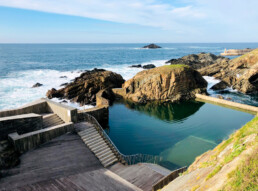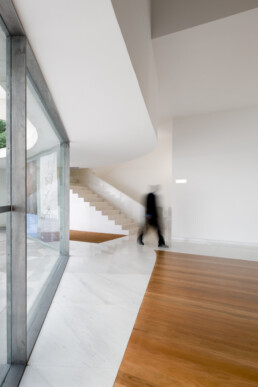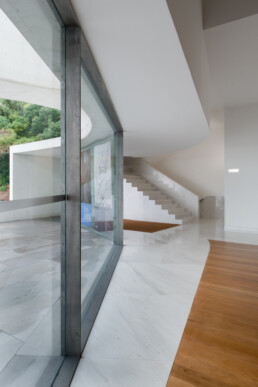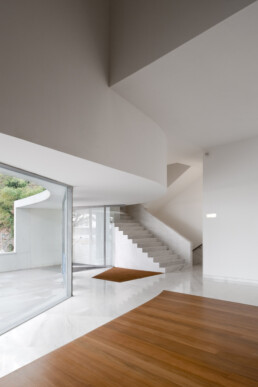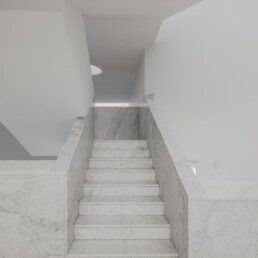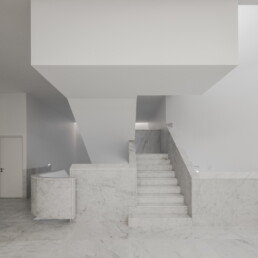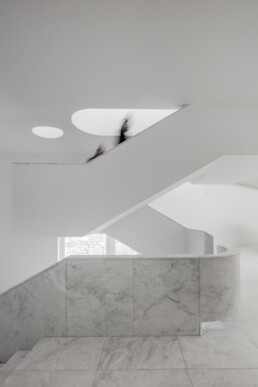Stairs as Sculptures: The Legacy of Álvaro Siza in Contemporary Architecture
DATE
10.01.2024
In the world of contemporary architecture, the name of Álvaro Siza resonates strongly, and his obsession with stairs as sculptural elements has left an indelible mark on his work. The Portuguese architect has transformed the function of the stairs in his projects, turning them into true sculptures.
Siza finds her inspiration in the staircase designed by the legendary Michelangelo for the Laurentian Library in Florence. Michelangelo, a genius of the Renaissance, was both an architect and a sculptor, a duality that Siza could not initially achieve, but which he eventually achieved. Michelangelo’s influence goes beyond mere aesthetics. Siza has immersed himself in the “touch but don’t touch” philosophy that characterized the work of the Renaissance genius. This idea is masterfully translated into his architectural designs, such as the Portuguese Pavilion in Lisbon, where a canopy suspended by steel cables allows light to flow freely. Similarly, in the Gondomar Multipurpose Pavilion, the concrete cover appears to float without touching the other structure, creating a play of light and shadow that highlights the beauty of the architecture.
The tension of “almost touching something but not touching it” is a distinctive characteristic in Siza’s works. She manages to transform elements that are normally perceived as heavy into something ethereal and light, emphasizing the importance of letting light be the protagonist in her projects. This same philosophy is reflected in his sculpture, where his ability to create pieces that seem to defy gravity and rub without touching is a manifestation of his mastery in the art of architecture.
This influence manifests itself in his approach to stairs, which he considers not only as functional elements, but also as artistic interventions in space.
A first example is the Tidal Pools in Matosinhos, an architectural project that combines geometry with the nature of the ocean. Siza achieves a harmonious fusion with the surrounding rocks, using walls that contain water and integrate with the irregularity of the rocks.
The project was developed in four phases and included changing rooms, an entrance and a bar that act as a filter between the promenade and the beach. Stairs play a crucial role in connecting different levels and become sculptural and aesthetic elements in the design. Over time, the concrete on the stairs has aged, taking on an appearance that makes them appear as old as the surrounding granite rocks.
The Iberê Camargo Foundation houses the work of the Brazilian artist Iberê Camargo and was promoted by a widowed woman in collaboration with the Foundation itself. The building is located on the banks of a cliff with a height difference of 19 meters between the highest and lowest part, next to a large avenue.
The design of the building seeks to integrate with the terrain, as if it were a rock that opens towards the river. The operation of the building is based on a system of ramps that connects the exhibition rooms on different floors and opens towards the Guaíba River, which is a point of interest from the museum. Although ramps are the main means of circulation, there are also stairs that complement them.
The staircase selected in the work is located at the pedestrian access to the main volume of the building. Although as a whole it is a functional staircase, the first section stands out as a kind of sculpture. It is made of a large stone block without a railing and is integrated with the geometry of the false ceiling, forming a curve that starts from the top of the stone block. These elements add expressiveness to the space and attract visitors to ascend the marble steps, whose details are carefully studied.
Finally, the Santo Tirso International Sculpture Museum represents a culmination in the career of Álvaro Siza, in collaboration with Eduardo Soto de Moura, where his ability to deal with geometry, light and shadow, as well as the fusion of the solid and the emptiness manifests itself in an exceptional way. The staircase in this museum resembles a sculpture and can be analyzed in detail: it presents a play of light that contrasts curved geometries with the orthogonal structure of the staircase, a sculptural railing that is integrated into the cantilevered design, the continuation of the handrail of marble in the white plaster, a meticulous adjustment of the joints between the stone pieces and a carefully designed breakdown of the treads and partitions, with a peculiarity in the first riser of the first section. This staircase is an example of Siza’s mastery in creating spaces that go beyond the functional and become works of art in their own right.
In the world of contemporary architecture, the name of Álvaro Siza resonates strongly, and his obsession with stairs as sculptural elements has left an indelible mark on his work. The Portuguese architect has transformed the function of the stairs in his projects, turning them into true sculptures.
MArch Valencia. Arquitectura y Diseño
© 2025 MArch Valencia. Arquitectura y Diseño
Privacy policy | Cookies policy | Terms of use



